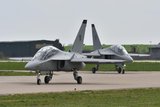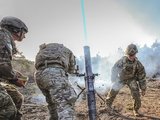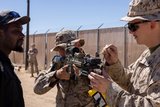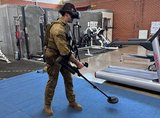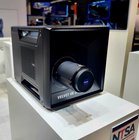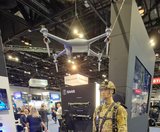TCTS Inc II programme progresses
Rockwell Collins has completed the Preliminary Design Review of the US Navy's Tactical Combat Training System Increment II (TCTS Inc II) programme and has been approved to begin detailed design work, the company announced on 19 June.
The initial $142 million award for the TCTS Inc II was awarded in 2017. Rockwell Collins was selected as a prime contractor and systems integrator for the next-generation air combat training system along with collaboration and support from Leonardo DRS.
The TCTS Inc II programme intends to replace the US Navy and Marine Corps’ training range infrastructure to improve effectiveness of training across all squadrons and fleet forces. The new system will support real-time operational air combat training for a variety of missions and platforms, including legacy and advanced aircraft.
The system will also enable the blending of live and synthetic elements into training known as live, virtual and constructive. The open system architecture with multiple independent levels of security protects the tactics, techniques and procedures being used.
TCTS Inc. II also provides interoperability for joint and coalition training with fourth and fifth-generation platforms while aligning with industry software standards such as the FACE technical standard and software communications architecture.
More from Training
-
![Cubic tailors mortar simulator for the US Army]()
Cubic tailors mortar simulator for the US Army
The company’s mortar trainer received improvements based on soldier’s feedback.
-
![Saab expands footprint in the US]()
Saab expands footprint in the US
The company will operate in two new locations in the coming years to better support US services.
-
![How terrain management capabilities can improve military training]()
How terrain management capabilities can improve military training
This type of tool provides more realistic training easing the incorporation of new scenarios that accurately represent the threats of the battlefield.
-
![I/ITSEC 2024: Australian Army approaches second phase of countermining training]()
I/ITSEC 2024: Australian Army approaches second phase of countermining training
The Engineering Corps has been conducting individual instruction using FLAIM Systems’ Sweeper and should start collective deployments in 2025.
-
![I/ITSEC 2024: Zeiss introduces Velvet 4K SIM projector for night flight simulation]()
I/ITSEC 2024: Zeiss introduces Velvet 4K SIM projector for night flight simulation
The next-generation platform is motion-compatible and can be used in OTW and NVG applications.
-
![I/ITSEC 2024: Saab introduces UAV live training capability]()
I/ITSEC 2024: Saab introduces UAV live training capability
The system can be used to prepare soldiers for both drone offensive operations and CUAS missions.









